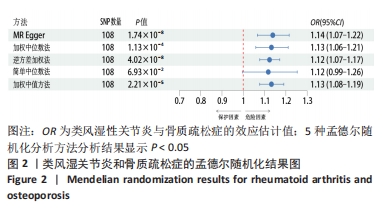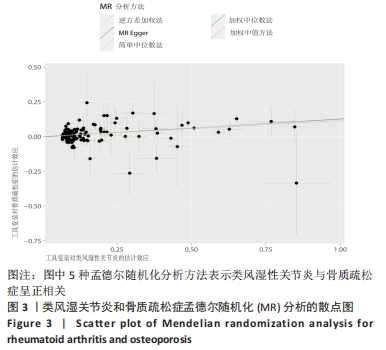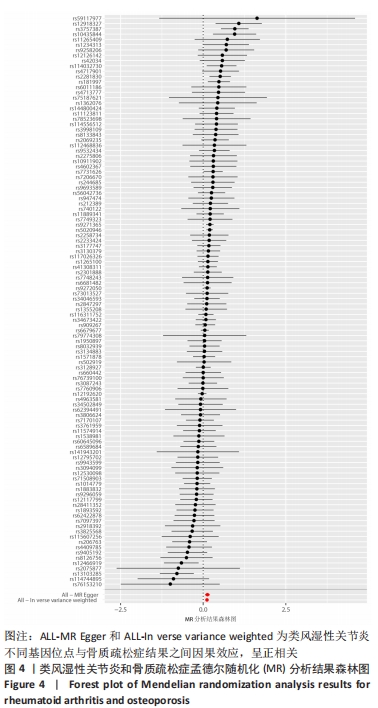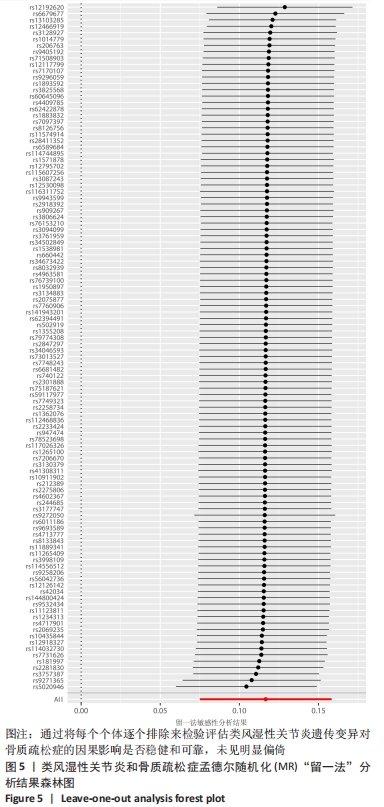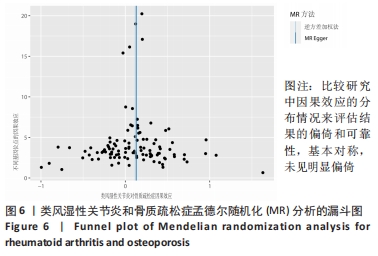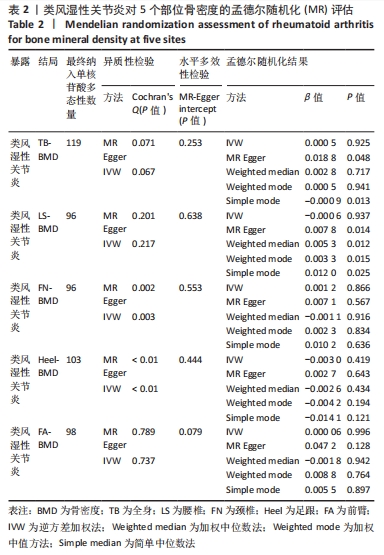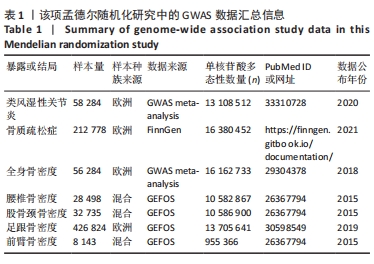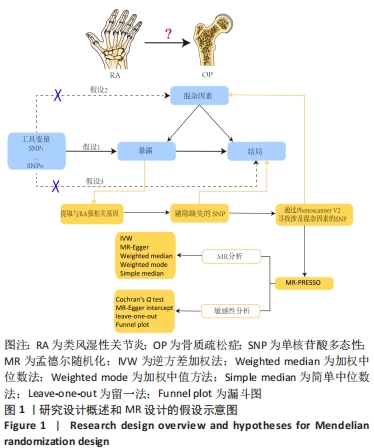[1] BLACK DM, EASTELL R, ADAMS AL. Atypical femur fracture risk versus fragility fracture prevention with bisphosphonates. Reply. N Engl J Med. 2020;383(22): 2189-2190.
[2] SALARI N, DARVISHI N, BARTINA Y, et al. Global prevalence of osteoporosis among the world older adults: a comprehensive systematic review and meta-analysis.J Orthop Surg Res. 2021;16(1):669.
[3] CHE L, WANG Y, SHA D, et al. A biomimetic and bioactive scaffold with intelligently pulsatile teriparatide delivery for local and systemic osteoporosis regeneration. Bioact Mater. 2022;19:75-87.
[4] VAN DER WOUDE D, VAN DER HELM-VAN MIL AHM. Update on the epidemiology, risk factors, and disease outcomes of rheumatoid arthritis. Best Pract Res Clin Rheumatol. 2018;32(2):174-187.
[5] MALOCHET-GUINAMAND S, LAMBERT C, GOSSEC L, et al. Evaluation of the implementation of guidelines on the treatment of osteoporosis in patients with rheumatoid arthritis. J Rheumatol. 2020;47(1):6-14.
[6] TONG JJ, XU SQ, ZONG HX, et al. Prevalence and risk factors associated with vertebral osteoporotic fractures in patients with rheumatoid arthritis. Clin Rheumatol. 2020;39(2):357-364.
[7] CHOI ST, KWON SR, JUNG JY, et al. Prevalence and fracture risk of osteoporosis in patients with rheumatoid arthritis: a multicenter comparative study of the FRAX and WHO criteria. J Clin Med. 2018;7(12):507.
[8] SKRIVANKOVA VW, RICHMOND RC, WOOLF BAR, et al. Strengthening the reporting of observational studies in epidemiology using mendelian randomisation (STROBE-MR): explanation and elaboration. BMJ. 2021;375:n2233.
[9] HEMANI G, ZHENG J, ELSWORTH B, et al. The MR-Base platform supports systematic causal inference across the human phenome. Elife. 2018;7:e34408.
[10] GOTO A, YAMAJI T, SAWADA N, et al. Diabetes and cancer risk: a Mendelian randomization study. Int J Cancer. 2020;146(3):712-719.
[11] HARTWIG FP, BORGES MC, HORTA BL, et al. Inflammatory biomarkers and risk of schizophrenia: a 2-sample mendelian randomization study. JAMA Psychiatry. 2017;74(12):1226-1233.
[12] LEE K, LIM CY. Mendelian randomization analysis in observational epidemiology. J Lipid Atheroscler. 2019;8(2):67-77.
[13] HA E, BAE SC, KIM K. Large-scale meta-analysis across East Asian and European populations updated genetic architecture and variant-driven biology of rheumatoid arthritis, identifying 11 novel susceptibility loci. Ann Rheum Dis. 2021;80(5):558-565.
[14] PIERCE BL, AHSAN H, VANDERWEELE TJ. Power and instrument strength requirements for Mendelian randomization studies using multiple genetic variants. Int J Epidemiol. 2011;40(3):740-752.
[15] VERBANCK M, CHEN CY, NEALE B, et al. Detection of widespread horizontal pleiotropy in causal relationships inferred from Mendelian randomization between complex traits and diseases. Nat Genet. 2018;50(5):693-698.
[16] BURGESS S, DUDBRIDGE F, THOMPSON SG. Combining information on multiple instrumental variables in Mendelian randomization: comparison of allele score and summarized data methods. Stat Med. 2016;35(11):1880-906.
[17] MENSAH-KANE J, SCHMIDT AF, HINGORANI AD, et al. No clinically relevant effect of heart rate increase and heart rate recovery during exercise on cardiovascular disease: a mendelian randomization analysis. Front Genet. 2021;12:569323.
[18] ZHENG J, FRYSZ M, KEMP JP, et al. Use of Mendelian randomization to examine causal inference in osteoporosis. Front Endocrinol (Lausanne). 2019;10:807.
[19] BOWDEN J, DAVEY SMITH G, HAYCOCK PC, et al. Consistent estimation in mendelian randomization with some invalid instruments using a weighted median estimator. Genet Epidemiol. 2016;40(4):304-314.
[20] YUAN S, CARTER P, MASON AM, et al. Genetic liability to rheumatoid arthritis in relation to coronary artery disease and stroke risk. Arthritis Rheumatol. 2022; 74(10):1638-1647.
[21] BOWDEN J, DEL GRECO MF, MINELLI C, et al. A framework for the investigation of pleiotropy in two-sample summary data Mendelian randomization. Stat Med. 2017;36(11):1783-1802.
[22] BURGESS S, THOMPSON SG. Interpreting findings from Mendelian randomization using the MR-Egger method. Eur J Epidemiol. 2017;32(5):377-389.
[23] FARDELLONE P, SALAWATI E, LE MONNIER L, et al. Bone loss, osteoporosis, and fractures in patients with rheumatoid arthritis: a review. J Clin Med. 2020; 9(10):3361.
[24] POURESMAEILI F, KAMALIDEHGHAN B, KAMAREHEI M, et al. A comprehensive overview on osteoporosis and its risk factors. Ther Clin Risk Manag. 2018;14: 2029-2049.
[25] ADAMI G, SAAG KG. Osteoporosis pathophysiology, epidemiology, and screening in rheumatoid arthritis. Curr Rheumatol Rep. 2019;21(7):34.
[26] HEINLEN L, HUMPHREY MB. Skeletal complications of rheumatoid arthritis. Osteoporos Int. 2017;28(10):2801-2812.
[27] SANTOS AM, SALDARRIAGA EL, GIRALDO-BUSTOS R, et al. Dickkopf 1 protein circulating levels as a possible biomarker of functional disability and chronic damage in patients with rheumatoid arthritis. Clin Rheumatol. 2018;37(3):795-801.
[28] GARNERO P, THOMPSON E, WOODWORTH T, et al. Rapid and sustained improvement in bone and cartilage turnover markers with the anti-interleukin-6 receptor inhibitor tocilizumab plus methotrexate in rheumatoid arthritis patients with an inadequate response to methotrexate: results from a substudy of the multicenter double-blind, placebo-controlled trial of tocilizumab in inadequate responders to methotrexate alone. Arthritis Rheum. 2010;62(1):33-43.
[29] BUCKLEY L, HUMPHREY MB. Glucocorticoid-induced osteoporosis. N Engl J Med. 2018;379(26):2547-2556.
[30] OHLSSON C, NILSSON KH, HENNING P, et al. WNT16 overexpression partly protects against glucocorticoid-induced bone loss. Am J Physiol Endocrinol Metab. 2018;314(6):E597-E604.
[31] ZANOTTI S, YU J, Adhikari S, et al. Glucocorticoids inhibit notch target gene expression in osteoblasts. J Cell Biochem. 2018;119(7):6016-6023.
[32] HUANG X, JIE S, LI W, et al. miR-122-5p targets GREM2 to protect against glucocorticoid-induced endothelial damage through the BMP signaling pathway. Mol Cell Endocrinol. 2022;544:111541.
[33] GROSSE J, ALLADO E, ROUX C, et al. ACPA-positive versus ACPA-negative rheumatoid arthritis: two distinct erosive disease entities on radiography and ultrasonography. Rheumatol Int. 2020;40(4):615-624.
|

